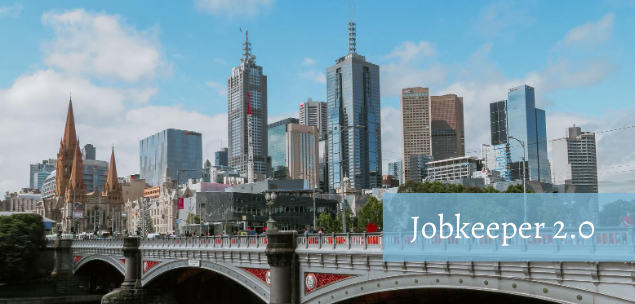Last Tuesday (21/07/2020), the Australia Treasury announced that they are going to extend the JobKeeper payment up to 28 March 2021, six months longer than the initial deadline.
According to Prime Minister Scott Morrison, the newest reports on JobKeeper and JobSeeker have shown how both schemes helped businesses to stay afloat during this time.
“The review has found that [JobKeeper and JobSeeker] has been well targeted, that it has been effective in stemming the loss of business closures and job losses, that it has saved businesses and it has saved livelihoods,” said PM Morrison.
“The report recommends that we should continue JobKeeper and we shall, but it needs to be done in a way that is responsive to the circumstances.”
However, PM Morisson also mentioned that there would be some changes to make sure that the payment is given to businesses impacted by the COVD-19 the most.
“So there’ll be the next quarter after September, and then there’ll be the March quarter,” he said.
“In both cases, businesses will have the test reapplied in relation to their turnover and it will be looking at their performance over this first six month period of the program, and that will provide where it’s needed, the gateway into the next phase of the program.”
How is JobKeeper 2.0 different?
The first thing that businesses owners and employees need to know is that there will be a reassessment to see if they need the subsidies.
The assessment will be divided into two parts. The first part is on 28 September 2020, which is after the initial JobKeeper term is ending. The second one is in the next quarter, which is on 4 January 2021.
“In both cases, businesses will have the test reapplied in relation to their turnover and it will be looking at their performance over this first six month period of the program and that will provide where it’s needed, the gateway into the next phase of the program,” said the Prime Minister.
In the next two quarters, the payment rate for JobKeeper and JobSeeker will be decreased gradually.
The payment rate of $1,500 per fortnight for eligible employees and business participants will be reduced to $1,200 per fortnight from 28 September 2020 and to $1,000 per fortnight from 4 January 2021.
From 28 September 2020, lower payment rates will apply for employees and business participants that worked fewer than 20 hours per week.
Related: The $130 billion wage subsidy scheme (JobKeeper payment) explained
Australia Treasurer Josh Frydenberg said that the Australia Treasury was expecting that the number of JobKeeper recipients would reduce substantially.
By December 2020, it is expected that only 1.4 million people that rely on JobKeeper and by March 2021, there will only be 1 million people.
“We know that the economic pain caused by COVID will end and that many businesses now struggling will be viable once again,” he said. “This is why we’re extending the payment to buy time to get businesses and employees to the other side.”
Some ‘pain points’
Although the JobKeeper payment is extended, some experts warned business owners to be cautious about how the subsidies can work on a day-to-day basis.
Employsure Managing Director Ed Mallet said that the new payment scheme has some weaknesses and it could ‘present pain points and frustrations’ to business owners.
“Employers shouldn’t use it as a reason to bury their heads in the sand. Subsidy shouldn’t be confused for sustainability, and if you need to make hard decisions about the viability of your business, don’t delay the inevitable,” he said.
According to Mr Mallet, the extension of JobKeeper gives small businesses a sense of certainty that could help them move forward and make smart employment in 2021. However, business owners need to understand the new details of JobKeeper and be cautious of its potential repercussions.
Meanwhile, Chartered Accountants Australia and New Zealand (CA ANZ) Tax Leader Michael Croker suggested businesses to re-evaluate their eligibility to continue receiving JobKeeper payments after 27 September.
“Employers will need to trawl through staff records and apply a 20 work hours test which ‘looks back’ to February 2020, and communicate which employees get the full JobKeeper rate and who gets the lesser amount,” Mr Croker said.
“The proposed retesting based on actual GST turnover every quarter to determine continuing JobKeeper eligibility means that most businesses will look even more closely at their billing and cash flow arrangements.”
According to Mr Croker, businesses with fluctuating income should be more careful. This is because once they are out of the JobKeeper payment, it is unlikely for them to re-enter the program and receive the subsidies that they need.
“We are at a critical point where businesses need to consider their future and ongoing eligibility for JobKeeper,” he said.
“This JobKeeper extension has equipped some Australians with an extended lifeline, but the government is signalling that it’s time for businesses and employees to become more self-reliant.”
Keep up to date with news about JobKeeper on our LinkedIn, Twitter, Facebook and Instagram.

